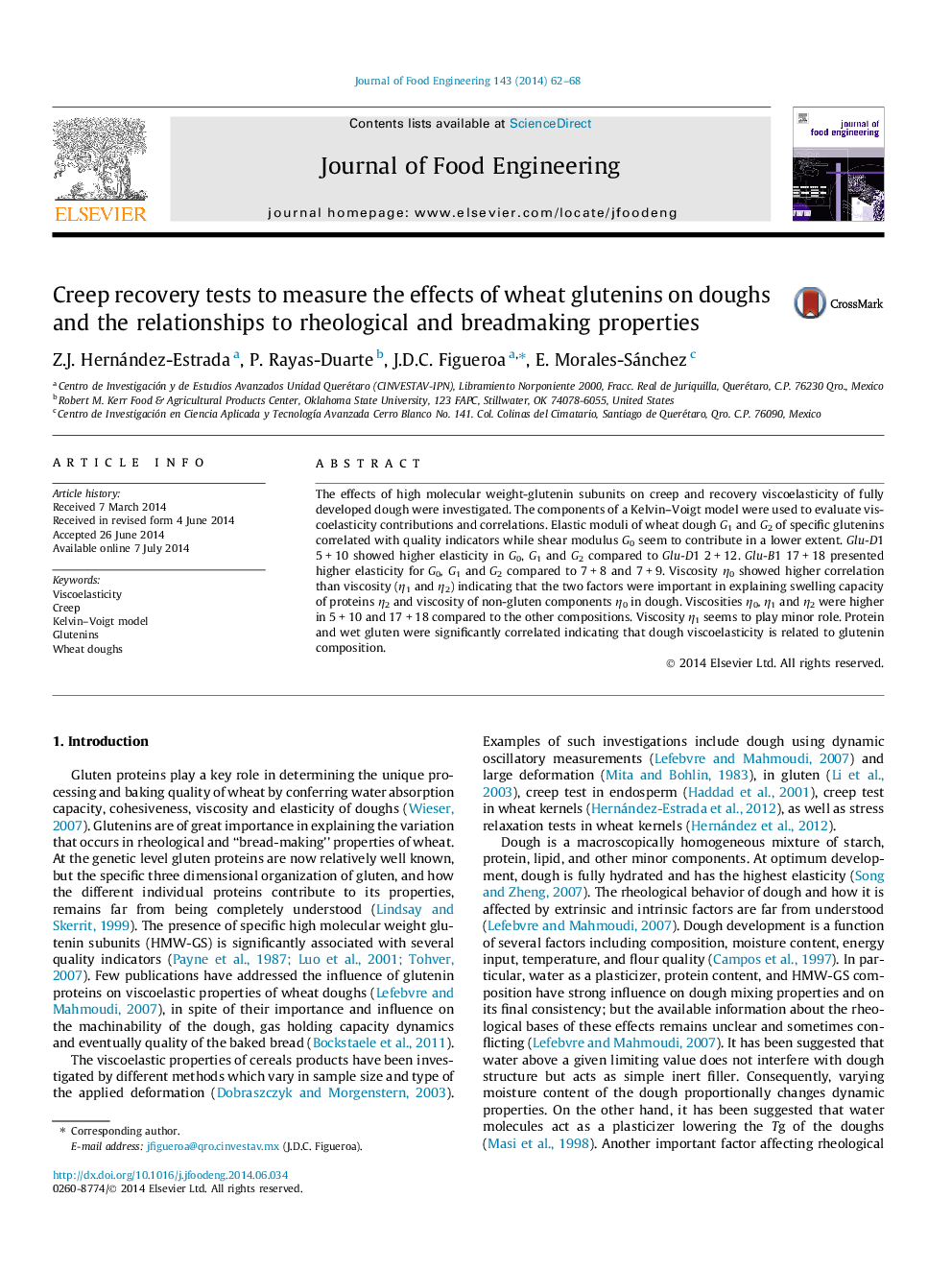| Article ID | Journal | Published Year | Pages | File Type |
|---|---|---|---|---|
| 223036 | Journal of Food Engineering | 2014 | 7 Pages |
•Protein composition (HMW-GS) had significant effect on dough rheological properties.•Dough viscoelasticity was affected by glutenin composition.•Elastic moduli of doughs were correlated with quality.•Dough viscoelasticity was associated with breadmaking quality of wheat.•Plasticizers viscosity showed correlation with quality than protein viscosity.
The effects of high molecular weight-glutenin subunits on creep and recovery viscoelasticity of fully developed dough were investigated. The components of a Kelvin–Voigt model were used to evaluate viscoelasticity contributions and correlations. Elastic moduli of wheat dough G1 and G2 of specific glutenins correlated with quality indicators while shear modulus G0 seem to contribute in a lower extent. Glu-D1 5 + 10 showed higher elasticity in G0, G1 and G2 compared to Glu-D1 2 + 12. Glu-B1 17 + 18 presented higher elasticity for G0, G1 and G2 compared to 7 + 8 and 7 + 9. Viscosity η0 showed higher correlation than viscosity (η1 and η2) indicating that the two factors were important in explaining swelling capacity of proteins η2 and viscosity of non-gluten components η0 in dough. Viscosities η0, η1 and η2 were higher in 5 + 10 and 17 + 18 compared to the other compositions. Viscosity η1 seems to play minor role. Protein and wet gluten were significantly correlated indicating that dough viscoelasticity is related to glutenin composition.
